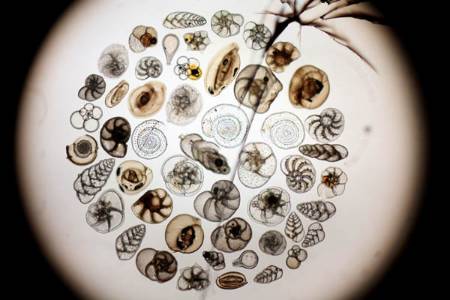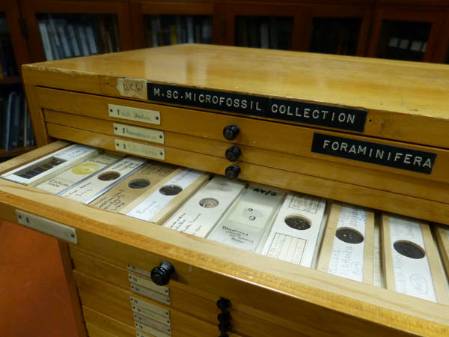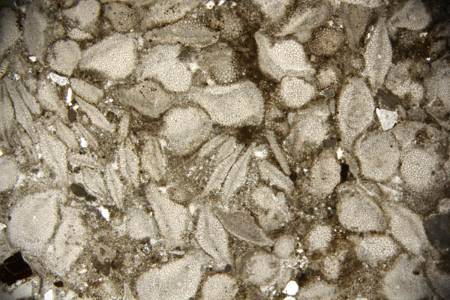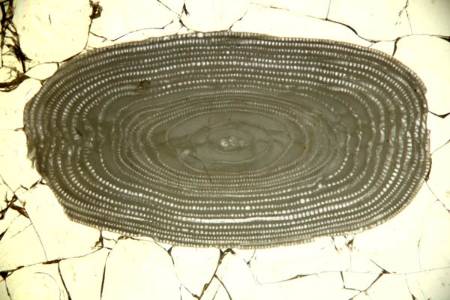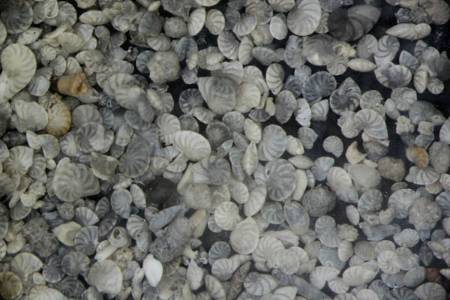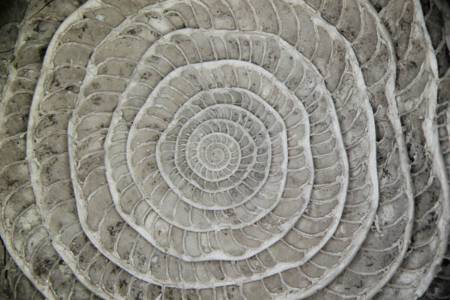Over the last month or so we have been preparing a large microfossil teaching collection for loan to the University of Birmingham to support a new postgraduate masters course on Applied and Petroleum Micropalaeontology. The collection consists of 730 slides and over 2,500 countable specimens housed in a single cabinet.
Microfossils in the collection represent all the different foraminiferal groups and were compiled by Prof. John Haynes of University of Wales, Aberystwyth where he used the collection to teach an M.Sc. course in Micropalaeontology before his retirement in 1993.
A glass slide with mounted specimens arranged to illustrate the shell structure in various groups of Foraminifera. The crack across the slide was caused, presumably by a student, while focussing the microscope too closely on the slide! In general the collection is in remarkable condition considering the many years of use for teaching.
The loaned teaching collection cabinet represents one of 62 microslide cabinets donated to the Museum by the University of Wales, Aberystwyth in the early 2000s along with associated residues, samples, notes and student theses. The university stipulated that a well curated collection be left before a student could graduate so the entire collection is in beautiful order.
Prof. Haynes supervised over 80 M.Sc. dissertations and 30 M.Phil and Ph.D. research students before he retired. The Aberystwyth Collection also contains ostracod collections compiled by Prof. Robin Whatley and his students. A searchable collections level catalogue of the Aberystwyth Microfossil Collection can be found on the Museum website.
A thin section of limestone composed almost entirely of Lepidocyclina, a genus of larger Foraminifera.
The University of Birmingham is the only university in the UK currently offering a full M.Sc. course specialising in micropalaeontology. The course started in October 2012 and the teaching in the first month will include classes on Foraminifera taught by Haydon Bailey.
Foraminifera and other microfossil groups are very useful for dating rock formations as well as giving details of the environment that they were deposited in. This sort of information is vital in producing models for exploration of petroleum and other natural resources.
To prepare the loan we had to compile a list of all specimens, count them if possible, number the slides individually and make notes on the condition of specimens and slides that were in poor condition. A big thank you to Haydon Bailey and Daryl Tappin for help in preparing this vast loan.
Below are a few more images of some of the specimens that caught my eye while I was checking the loan. I hope that both you and the University of Birmingham students will enjoy this amazing collection!
A thin section of Alveolina elliptica. The cracks are in mounting balsam.
A slide with an uncountable number of foraminiferal specimens from the Nothe Clay of the Jurassic coast. Roughly 2,500 specimens were counted on the loaned slides. In reality the collection consists of far more than 2,500 specimens as we did not try to count the individual specimens on 200 of the 730 slides because there were too many of them.
.. and finally Nummulites britannicus.



